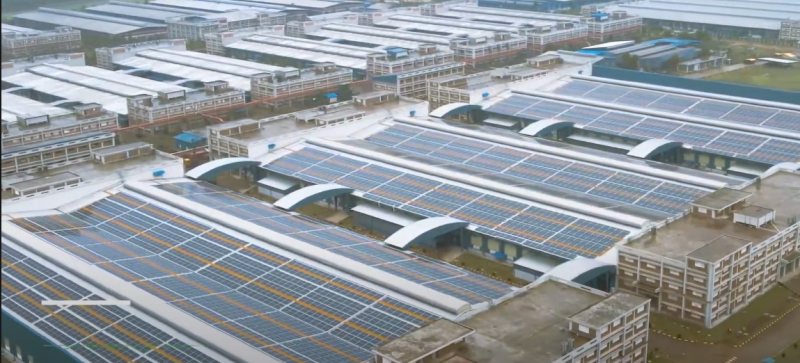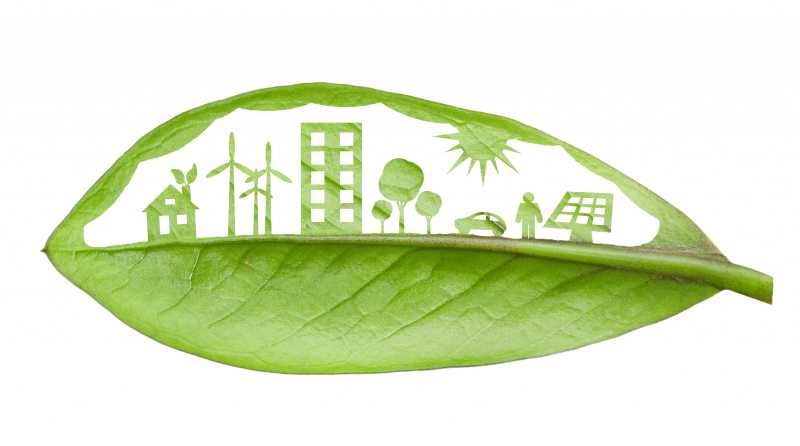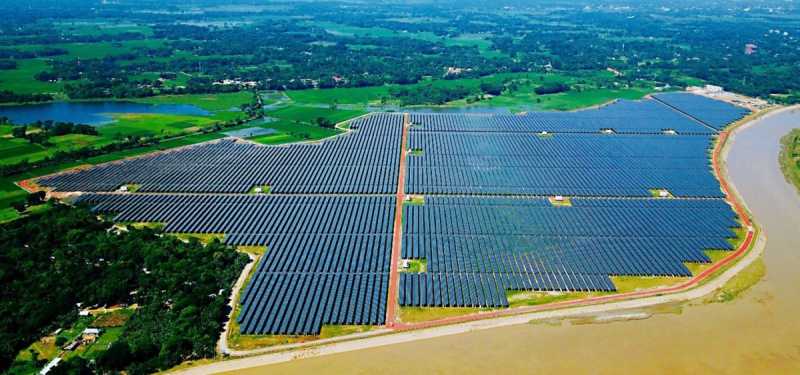Green New World: The Future of Renewable Energy
Published at - November 22, 2021
11 min read
Green New World: The Future of Renewable Energy
It is the 2021 we are living in and our world has been through a rapid development in science and technology during the last twenty years. Since the twentieth century rapid urbanisation and industrialisation has swept across the globe. Today, surviving in the twenty-first, we are analyzing the benefits and the detriments of widespread urbanization and industrialisation. The benefits are clear as the daylight and that is our day to day lives made easier. The disadvantages, on the other hand, are clear as the daylight, the destruction of our planet's environment. We, however conscious, often chose selective attention and let the dark sides of industrialised civilization slip from our mind. It is to be acknowledged that, whether we consider or ignore the fact that we are deliberately plotting to destroy humanity, it is already too late to amend our follies. We cannot turn our civilization around by going back to caves and live like our prehistoric ancestors did. We closed all the doors behind us while we marched ahead. Now as we can't go back, we must look for alternatives to save ourselves.
The alternative is renewable energy. We must let go of fossil fuel based energy and bring back nature in our quest to a Green New World. But will it be possible based on where we stand today? In this blog, we will focus on the future of renewable energy and our possibilities and shortcomings in achieving a green new world.

Where We Stand Today?
Since the Industrial Revolution, fossil fuels have dominated the energy mix of most countries on the planet. This has far-reaching ramifications for both the global climate and human health. The combustion of fossil fuels for energy accounts for three-quarters of worldwide greenhouse gas emissions. Furthermore, fossil fuels are responsible for a significant quantity of local air pollution, which causes at least 5 million premature deaths each year.
In the news, we frequently hear about the tremendous expansion of renewable technologies. But how much of an effect has this expansion had on our energy systems?
Renewable technologies provided roughly 11% of global primary energy in 2019. All over the world, more than 7000 TWh energy is generated through renewable sources.
Renewable energy, as of 2019, has been adopted by many of the European and American nations. In Asia, however, the usage of renewable energy stays considerably low. Norway and Iceland rank the highest in using renewable energy as a primary source of energy. Iceland, ranking at the top, gains 79% of its sources from renewable energy. Norway, attaining the second position, gains 56% from renewable sources. Sweden, Brazil and Ecuador stand in line after Norway and Iceland, followed by Canada, Venezuela, Colombia, Peru, Chili, Austria, Portugal and Croatia. China uses renewable sources for less than 20% of its energy and nations like USA, Japan, India, Russia and Australia gain less than 10% of its energy from renewable sources.
According to statistics, most of the renewable energy generation is based on hydropower plants, followed by wind and solar. Hydropower alone produces more than 4000 TWh electricity all over the globe.
Singapore is the worst in the world, relying on fossil fuels 98% of the time. The country consumes the most oil in the world in terms of overall energy supply, with fossil fuels accounting for 73% of total energy consumption. Due to its good trading location and perceived safe climate, it is home to large oil firms such as Exxon Mobil. Singapore is closely followed by Australia, which has a 93% dependence rate, and South Africa, which has a 91% reliance rate. With a combined reliance on fossil fuels of 90%, Luxembourg and the Netherlands are ranked fourth and fifth, respectively. The Netherlands has the most natural gas reserves of any country on the list. The Groningen gas field, Europe's largest, accounts for half of this.
Progress in Recent Times
Today, fossil fuel is dominating the world. In 2017, 81 percent of the energy the world consumed was oil, coal and natural gas. In 2019, fossil fuels continued to account for 84 percent of global primary energy consumption. However, renewable energy is growing slowly.
Renewables contributed the most to the growth in energy consumption, accounting for 41%. Natural gas was the second-largest contributor, accounting for 36% of the increase. Oil, on the other hand, continued to lead in terms of overall energy use, accounting for 33% of total energy consumption. Coal accounted for 27% of worldwide energy consumption, followed by natural gas (24%), hydropower (6%), renewables (5%), and nuclear power (1%). (4 percent).
When it comes to renewable energy, Norway and Brazil are all world leaders. Also, Newzealand is showing promising aspects. Norway uses hydropower more than any other country on the planet, accounting for over half of its total supply. Because of the many steep valleys and rivers in the Nordic nation, as well as increased rainfall owing to climate change, hydroelectricity is abundant. Brazil is the world leader in biofuel and waste energy, with the second largest supply of renewable energy. These sources provide 32% of the country's total energy. It is the world's second-largest ethanol producer and a market leader, with sugarcane-based ethanol hailed as the most successful alternative fuel to date. Renewable energy sources provide 42% of New Zealand's total energy supply. It is a global leader in wind and solar energy, accounting for 25% of its total energy supply. The nation is excellently positioned for wind power due to its location in the path of the 'Roaring Forties,' a group of strong and continuous westerly winds. It also has a growing market for solar hot water heating systems and has abundance of sunshine for solar energy.
These three countries will invariably lead the new world revolution in the near future. Also, as a light of hope in this era of despair, awareness all over the world is growing. In 2020, the countries with the most installed renewable energy capacity will be ranked first in the globe are China, USA, Brazil, India, Germany, Canada, Japan, Italy and France. These countries along with Spain, Turkey and Australia hold promising attributes in adopting renewable energy.
The Dutch government has stated that normal production from the Groningen field will cease by 2022. According to our Monthly Energy Review, overall fossil fuel use in the United States, including petroleum, natural gas, and coal, decreased to 72.9 quadrillion British thermal units (Btu) in 2020, down 9% from 2019 and the lowest level since 1991. Our new graph of fossil fuel usage in the United States by source and sector illustrates how each sector uses fossil fuels. The graph also depicts fossil fuels used for non-combustion or non-fuel applications in industry, such as the production of plastics and chemicals.
Due to large expenditures made as part of the government's efforts to reach EU renewable energy and climate action goals, Germany's renewable energy utilization is high. Germany has been aiming to minimize its coal use, with renewable energy sources producing more electricity than coal and nuclear power combined for the first time in the first half of 2019. Wind energy generated more than 40% of the UK's electricity in 2019. The United Kingdom's consumption of coal fell by 96 percent in 2018 compared to 1970, demonstrating the country's commitment to alternative energy sources.
According to a report in Forbes, with the greatest rise in consumption on record, renewable energy kept up its phenomenal growth run. The main input was wind, after hydropower, but solar was not far behind. China once again led the world in renewable energy consumption, followed by the United States and Japan. Renewable energy now accounts for 10.4% of total electricity generation, exceeding nuclear power for the first time.
Therefore, however slowly, we are witnessing gradual progress in clean energy adoption.
What the Future Holds
It's hard, often impossible to predict the future. Nevertheless, if we analyze the recent trend we may provide some speculations about the near future. If we analyze the data closely, the future looks optimistic.
Growth in Capacity: Between 2019 and 2024, renewable energy capacity is expected to grow by 50%, led by solar energy. This is according to the IEA's 'Renewable 2020' report, which revealed that solar, wind, and hydropower projects are being built at their highest rate in four years, supporting the claim that renewable energy is the way of the future. By storing electricity during the day and running at night, solar systems will continue to reduce their fluctuation rates. Advanced solar plants, on the other hand, will have higher DC to AC ratios, which means they will provide more consistent service for longer periods of time. Residential solar power is predicted to grow from 58 gigawatts in 2018 to 142 gigawatts by 2024, with annual capacity additions more than tripling to nearly 20 gigawatts. By 2024, China is predicted to have the world's largest installed residential solar capacity, with Australia, Belgium, the Netherlands, and Austria experiencing the fastest per capita growth. In 2024, commercial and industrial solar energy capacity is expected to reach 377 GW, up from 150 GW in 2018, with China expected to be the fastest-growing market. Solar power is usually more affordable and has a very consistent load profile during the day, thus it allows for significant savings on electricity costs. As a result of the Fukushima nuclear disaster in 2011, Japan is experimenting with the notion of putting offshore turbines to replace many of its nuclear reactors. Marubeni has inked a project deal to construct offshore farms in northern Japan, each capable of producing 140 MW of electricity. According to the International Energy Agency, hydropower will continue to be the world's largest source of renewable energy in 2024. China, India, and Brazil are expected to boost capacity by 9% (121 GW) throughout the projection period. Only three megaprojects are predicted to account for 25% of worldwide growth: two in China (the 16 GW Wudongde and 10 GW Baihetan projects) and one in Ethiopia (the 6.2 GW Grand Renaissance project).
The Cost of Renewable Energy: In 2018, the cost of solar PV-based power fell by 13%, while Carbon Tracker projects that by 2040, 72% of coal-based power will be unprofitable globally. Solar energy will account for 60% of expected renewable growth, according to the IEA research, owing to its accessibility. Solar energy expansion has more than doubled in the last six years compared to the preceding six. By 2024, the cost of solar electricity is predicted to drop by 15% to 35%, fueling even more growth in the second half of the decade.
New Technology: Petteri Laaksonen, Research Director at Finland's Lappeenranta-Lahti University of Technology's School of Energy Systems, says- “The biggest impact has been wind and solar technologies leading to a very rapid drop in the production costs of electricity.” According to the International Energy Agency, renewable energy will account for 30% of global energy by 2024, with the majority of this coming from solar and wind projects that are still being built at a breakneck speed. Solar panels accounted for 60% of the renewable energy capacity built in 2019, indicating an increase in its use. Even tech behemoths like Apple, Google, and Amazon have made solar investments. Another technology that will contribute greatly to electrification. By 2050, renewable-based electrification of European industry, buildings, and transportation will allow the continent to cut its energy-related CO2 emissions by 90%. We are gradually becoming aware of the Internet of Things (IoT). The term "power-to-X" refers to a variety of technologies that convert electricity into heat, hydrogen, or renewable synthetic fuels. It presents a tremendous opportunity to accelerate the transition to renewables by increasing synthetic fuel production and rapidly reducing fossil fuel emissions in industries ranging from steel to food to chemicals and fertilizers. The device could also be useful in addressing long-term energy storage issues, such as managing the ups and downs in renewable energy supply. The increasing affordability and acceptability of so-called distributed generation is a cultural shift in the world of renewables. This refers to local power generation in the retail or commercial sectors, ranging from solar panels on residential residences to combined heat and power systems in companies. Scaling up distributed generation has various benefits, including lowering reliance on centralised power sources, improving grid dependability, and making small-scale renewable power sources economical. Distributed generating is much more effective when integrated with smart grids, which are controlled by computers to fine-tune transmission. Moreover, the storing of generated power is getting stronger day by day.
Therefore, renewable energy will continue to gain ground over fossil fuels in the coming decade, lowering greenhouse gas emissions. Analyzing the above stated facts, we can conclude that- if we play our cards right we can proceed to achieve a world 100% dependent on global energy. The stage for the revolution is being prepared day by day. It's our turn to act and dream of a Green New World.



